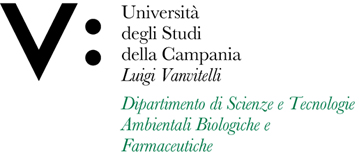Pasquale IOVINO
Insegnamento di Chimica dell'ambiente
Corso di laurea in TECNICHE DELLA PREVENZIONE NELL'AMBIENTE E NEI LUOGHI DI LAVORO (ABILITANTE ALLA PROFESSIONE SANITARIA DI TECNICO DELLA PREVENZIONE NELL'AMBIENTE E NEI LUOGHI DI LAVORO)
SSD: CHIM/12
CFU: 1,00
ORE PER UNITÀ DIDATTICA: 10,00
Periodo di Erogazione: Secondo Semestre
Italiano
| Lingua di insegnamento | ITALIANO |
| Contenuti | Pesticidi; diossine, furani e PCB; altri composti organici tossici di interesse ambientale |
| Testi di riferimento | Baird & Cann. Chimica ambientale, Seconda Edizione, Zanichelli. |
| Obiettivi formativi | Acquisire le conoscenze generali dei concetti di base della chimica ambientale per la comprensione e l'approfondimento degli argomenti affrontati nei corsi precedenti. Lo scopo di questo corso è acquisire i concetti fondamentali dei fenomeni chimici e biologici che avvengono nell'ambiente naturale e l'interazione delle sostanze chimiche (fonti, funzioni, reazioni, trasporto, effetti e destino) negli ecosistemi (acqua, aria, suolo e organismi viventi). |
| Prerequisiti | Nessuno |
| Metodologie didattiche | Il corso è articolato in 10 ore di lezioni frontali svolte dal docente in cui verrà esposta la teoria con molteplici esempi pratici di chimica verde. Nel suo lavoro personale lo studente dovrà assimilare conoscenze e concetti alla base della chimica ambientale. |
| Metodi di valutazione | L'esame consiste nel superamento di una prova orale. |
| Altre informazioni | Lo studente potrà avvalersi del materiale didattico (dispense, articoli scientifici, ecc.) messo a disposizione sul sito web di Ateneo (sharepoint). Il docente è disponibile per ricevimento studenti nei giorni indicati sulla scheda insegnamento e su richiesta inoltrata via e-mail. |
| Programma del corso | Molecole organiche tossiche. Classificazione dei pesticidi. Insetticidi organoclorurati. LD50, LOD50. Bioaccumulazione, fattore di bioconcentrazione e coefficiente di ripartizione. Toxafeni, ciclopentadieni. Insetticidi organofosforati. Carbammati. Insetticidi naturali. Erbicidi inorganici ed organici, erbicidi triazinici. Erbicidi fenossialifatici e sottoprodotti: tetraclorodibenzo-p-diossina. Difenili e dibenzofurani policlorurati. Eliminazione dei difenili policlorurati. Idrocarburi policiclici aromatici e loro derivati. Meccanismo di formazione, lipofilicità, bioaccumulazione, biomagnificazione, fattori che determinano la tossicità. Fattore di equivalenza della tossicità. Estrogeni ambientali. |
English
| Teaching language | Italian |
| Contents | Pesticides; dioxins, furans and PCBs; other toxic organic compounds of environmental interest |
| Textbook and course materials | Baird & Cann. Chimica ambientale, Seconda Edizione, Zanichelli. |
| Course objectives | Acquire the general knowledge of the basic concepts of environmental chemistry for understanding and deepening the topics addressed in previous courses. The aim of this course is to acquire the fundamental concepts of chemical and biological phenomena occurring in the natural environment and the interaction of chemical substances (sources, functions, reactions, transport, effects and destiny) in ecosystems (water, air, soil and living organisms). |
| Prerequisites | None |
| Teaching methods | The course is divided into 10 hours of lectures conducted by the teacher in which the theory will be exposed with multiple practical examples of green chemistry. In his personal work the student will have to assimilate knowledge and concepts at the base of environmental chemistry. |
| Evaluation methods | The exam consists of passing an oral test. |
| Other information | The student will be able to make use of the didactic material (lecture notes, scientific articles, etc.) made available on the University website (sharepoint). The lecturer is available to receive students on the days indicated on the teaching sheet and on inquiry sent by e-mail. |
| Course Syllabus | Toxic organic molecules. Classification of pesticides. Organochlorine insecticides. LD50, LOD50. Bioaccumulation, bioconcentration factor and partition coefficient. Toxaphene, cyclopentadienes. Organophosphorus insecticides. Carbamates. Natural insecticides. Inorganic and organic herbicides, triazine herbicides. Phenoxial phosphate herbicides and by-products: tetrachlorodibenzo-p-dioxin. Polychlorinated diphenyls and dibenzofurans. Elimination of polychlorinated diphenyls. Polycyclic aromatic hydrocarbons and their derivatives. Formation mechanism, lipophilicity, bioaccumulation, biomagnification, factors that determine toxicity. Toxicity equivalence factor. Environmental estrogens. |








